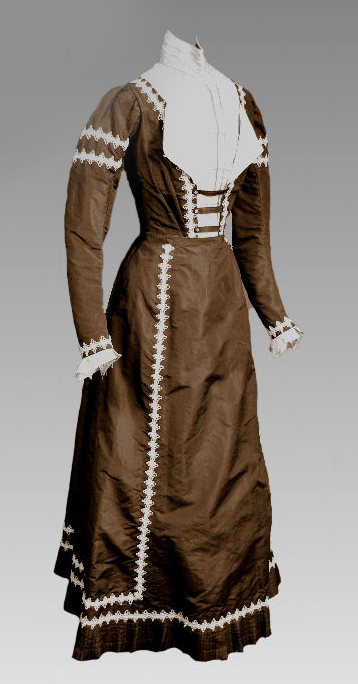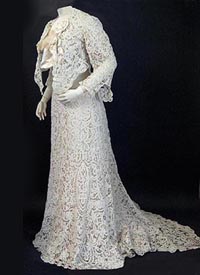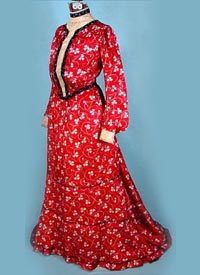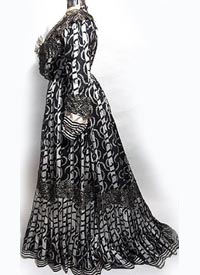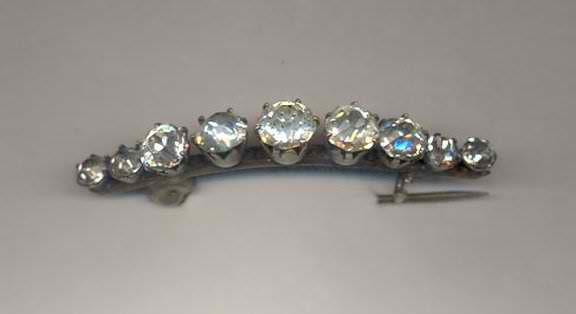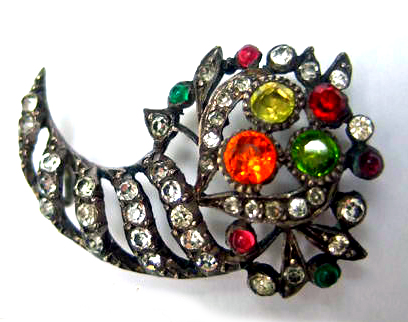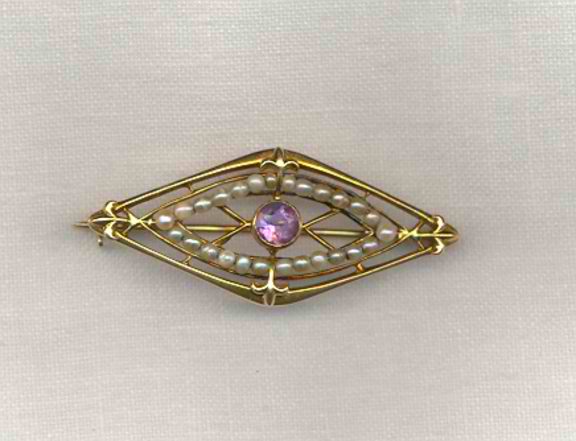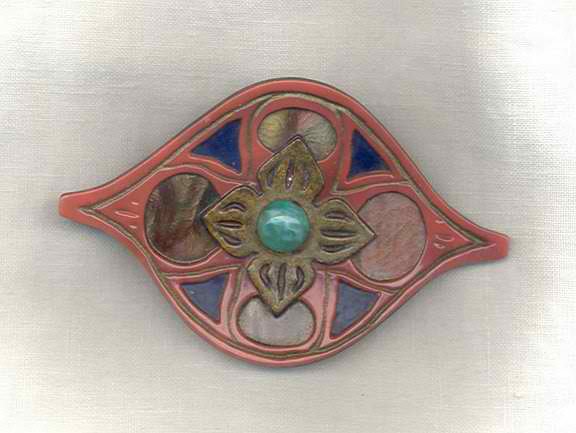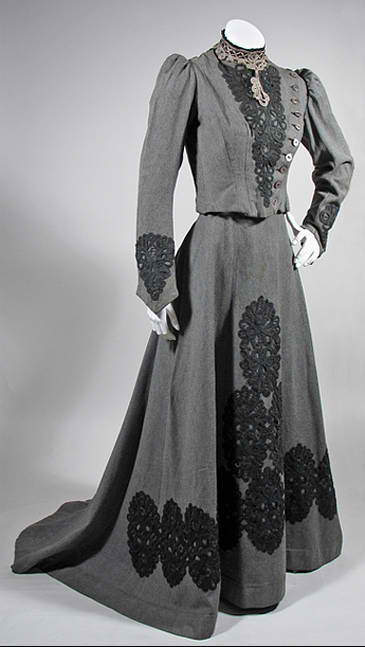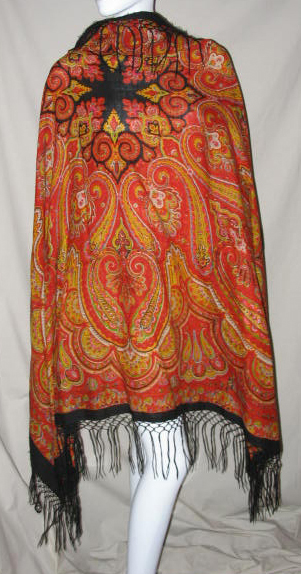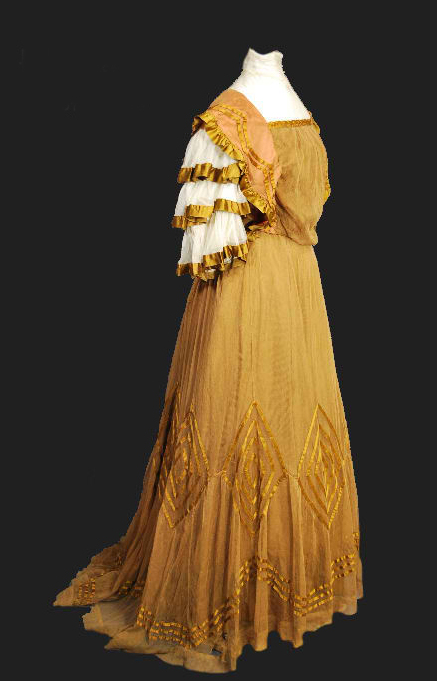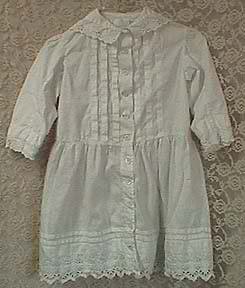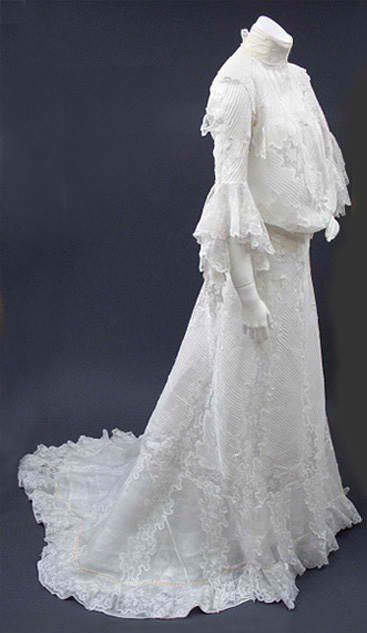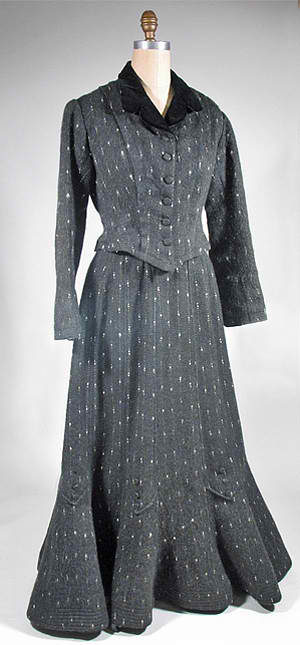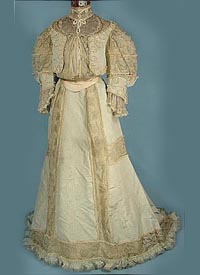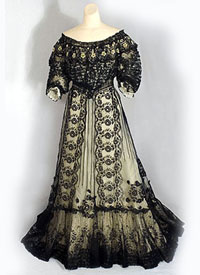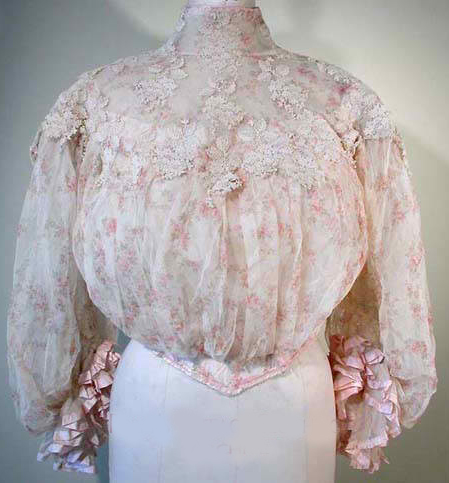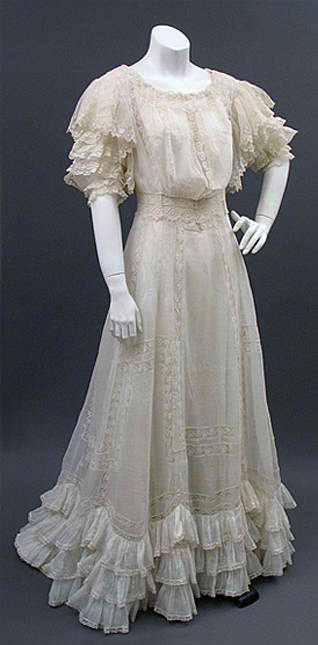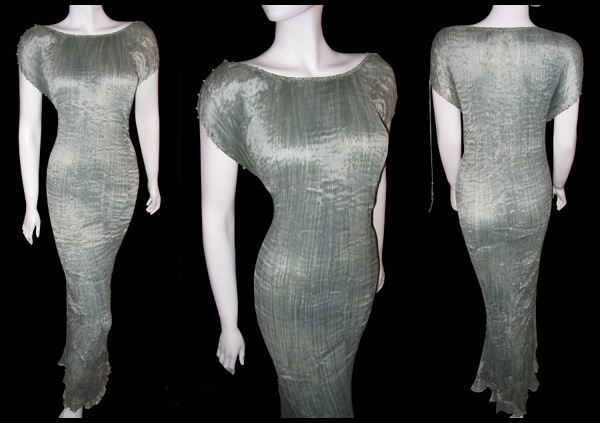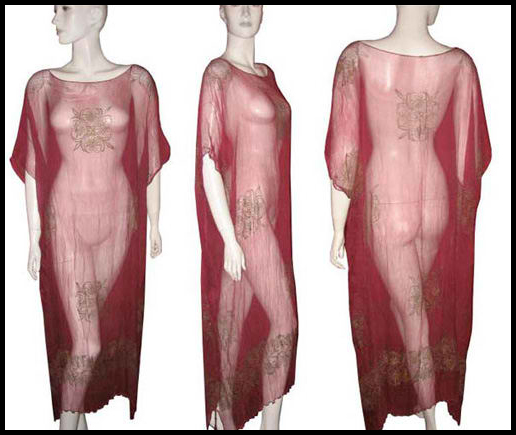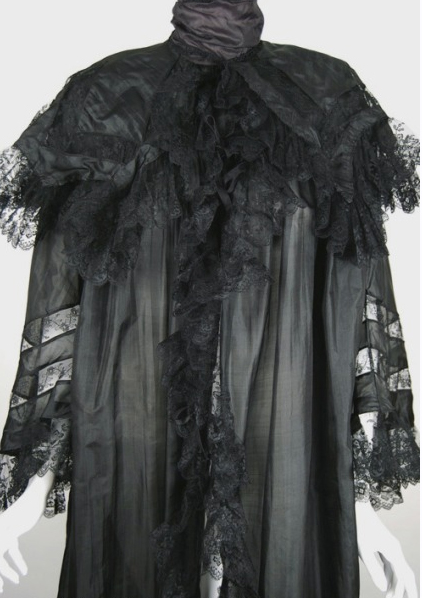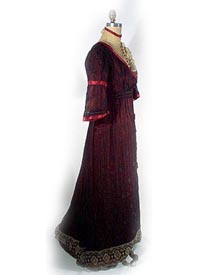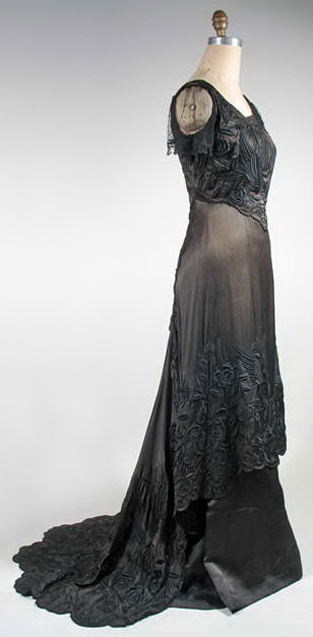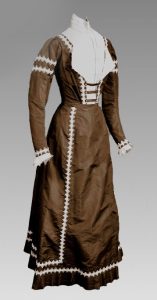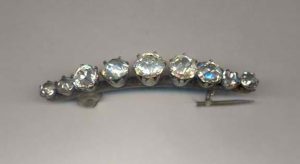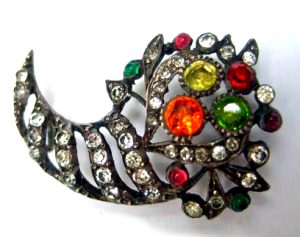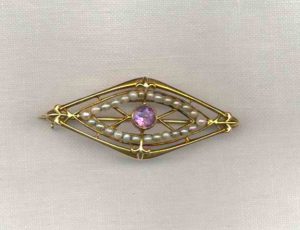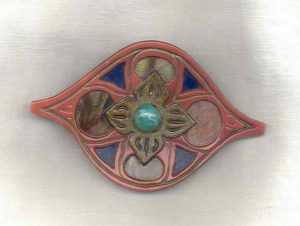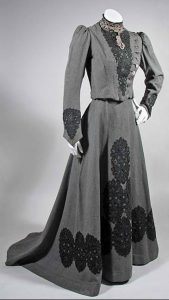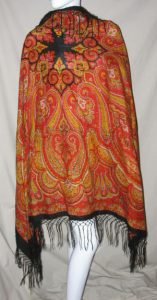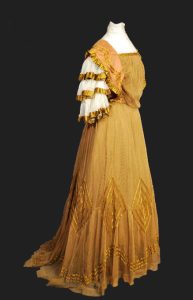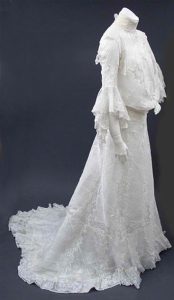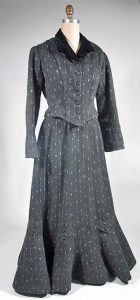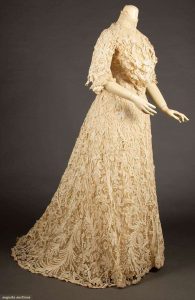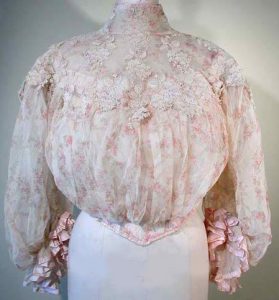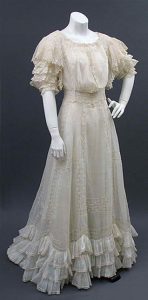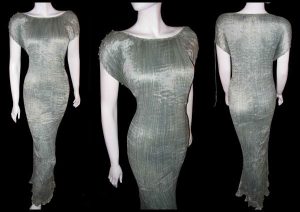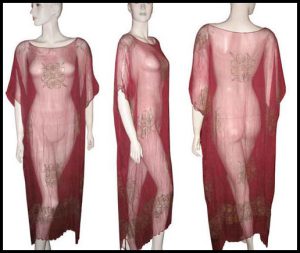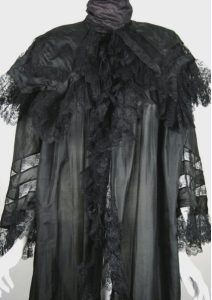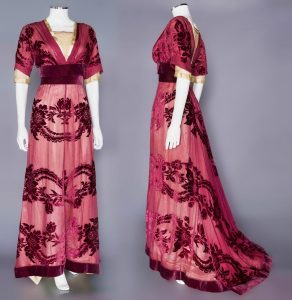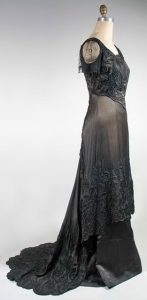As the Victorian era drew to its close, skirts for both day and evening were elongated at the back to form a train. The silhouette was slim at the hip, accomplished by pleating and smocking the excess fabric. Any fullness in the skirt began below the knee. Decoration was achieved through large and small tucks, hem ruffles, buttons, and lace inserts. For day, ladies wore very high necks, and the bosom had an undefined, full shape over the boned bodice, which often ended below the waist. These pigeon-breast or mono-bosom bodices often featured wide cape-like collars that dropped from the shoulders. Sleeves were generally fitted from shoulder to elbow, then full to the wrist. A double-sleeved effect, featuring a small, gathered under-sleeve revealed at the wrist, was seen often.
Evening dresses were more daring and were worn off the shoulder, with or without sleeves. The Edwardian era began mid-decade and initially took a retro step, with small balloon sleeves and very nipped-in waists last seen in 1895. Skirts, although full, were rounded. Fabrics were soft and allowed to drape. Wide sashes or cummerbunds were de rigueur.
The retro look quickly faded in favor of the revolutionary designs of Paul Poiret, who quickly became the most prominent fashion designer in Paris. He showed slim, straight skirts and insisted on fewer undergarments. His decrees resulted in the disappearance of the high, boned collar and in the loosening of women’s corsets, allowing them to literally breathe sighs of relief. This new freedom enabled a higher-waisted look, and Poiret’s empire line was popular. Most representative of the period were the amazingly detailed, superbly constructed gowns. These featured lace, cord work, appliqué, soutache, beading, tucking, and inserts—very often on the same gown! The great Haute Couture houses of this era include Worth, Doucet, Lanvin, Boue Souers, Callot Souers, Paquin, Lucile, and Fortuny.
Written by The Vintage Fashion Guild
